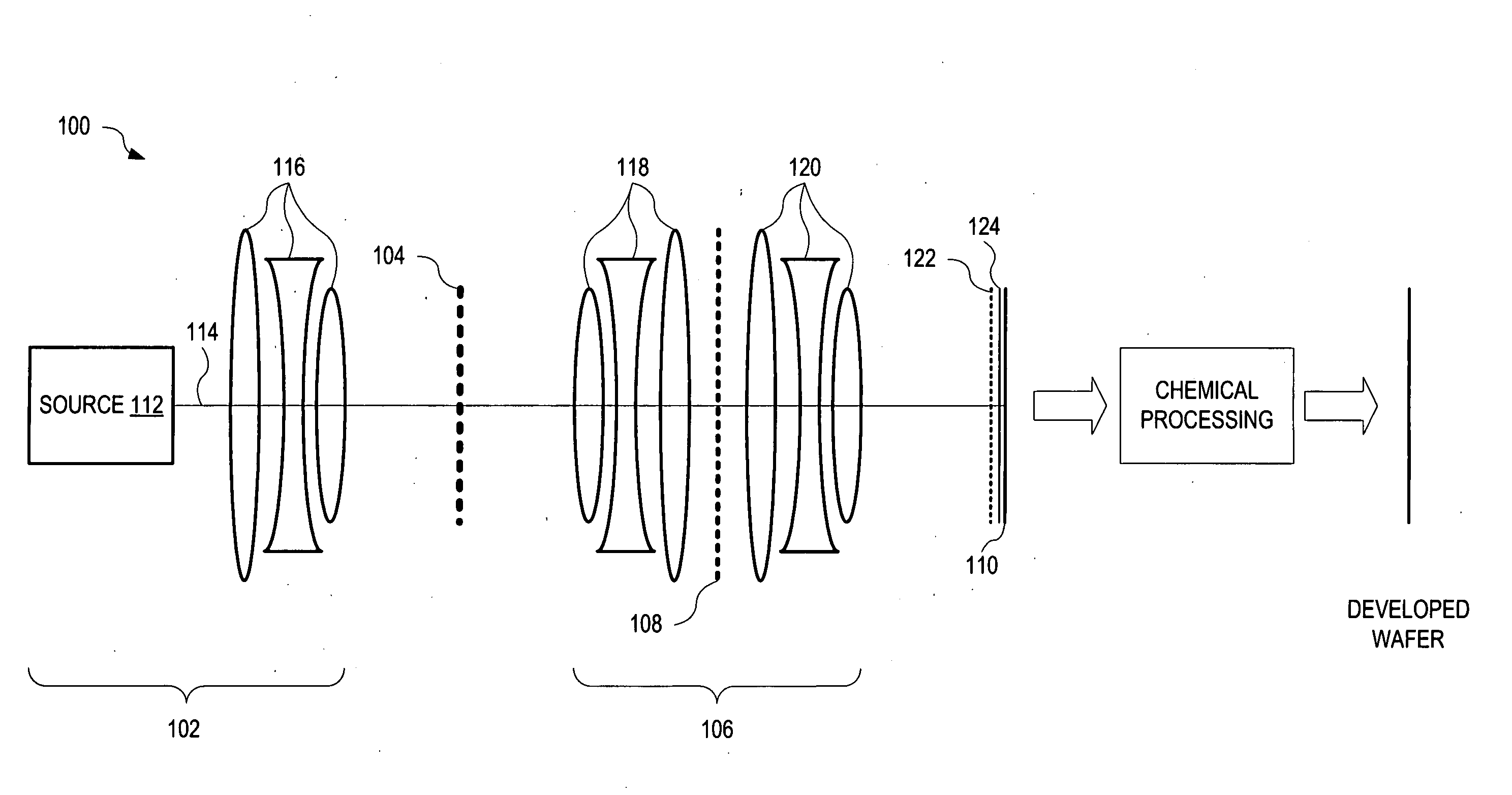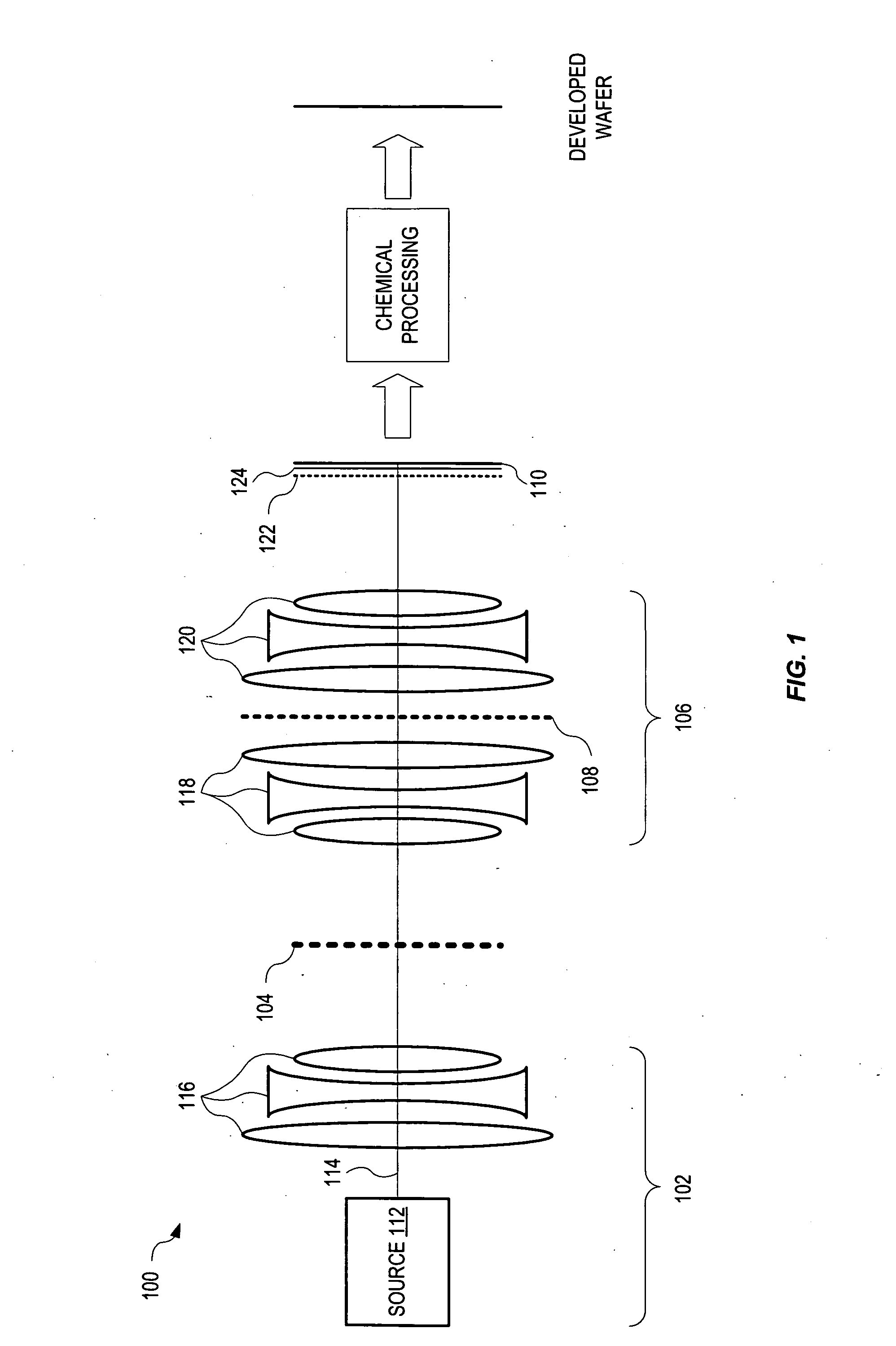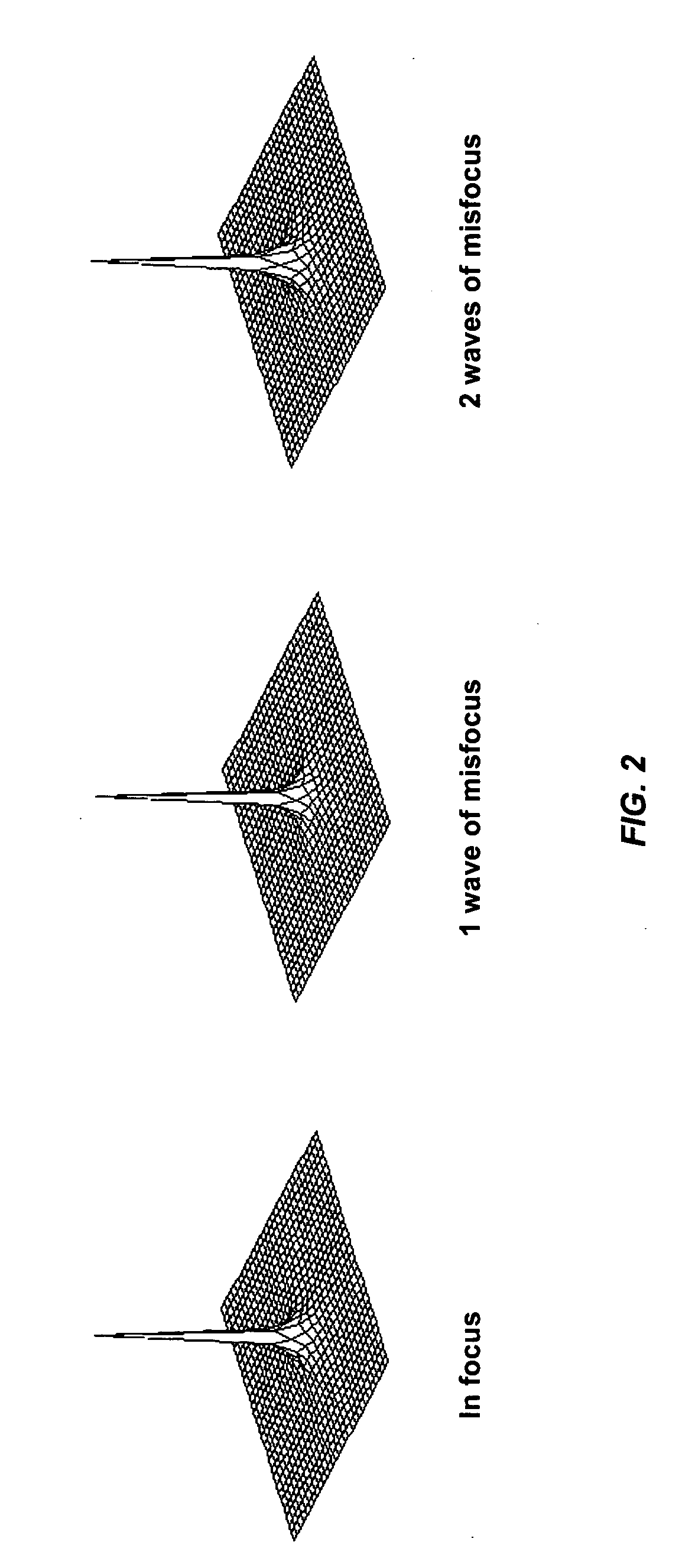Lithographic systems and methods with extended depth of focus
a lithographic system and depth of focus technology, applied in the direction of microlithography exposure apparatus, printers, instruments, etc., can solve the problems of increasing complexity and cost, adding approximately one-third to the overall cost, and adding a large cost to the finished semiconductor component of optical lithography, so as to reduce unwanted effects and increase the depth of focus
- Summary
- Abstract
- Description
- Claims
- Application Information
AI Technical Summary
Benefits of technology
Problems solved by technology
Method used
Image
Examples
Embodiment Construction
[0060]FIG. 1 illustrates an optical lithographic system 100 for extending depth of focus (DOF). System 100 is shown with an illumination system 102, a reticle 104, an imaging lens 106 that implements wavefront coding through a pupil plane function 108, and a wafer 110. Illumination system 102 is shown with an optical radiation source 112 and a lens group 116. Source 112 generates optical radiation 114 that passes through lens group 116, reticle 104 and imaging lens 106, including includes pupil plane function 108, to produce an aerial image 122. Reticle 104 is constructed such that a desired pattern is formed in aerial image 122, as described in more detail below. Imaging lens 106 may include lens groups 118 and 120, as shown. Imaging lens 106 operates to image reticle 104, illuminated by radiation 114, to produce aerial image 122. In one embodiment, radiation 114 is selected from the ultraviolet spectrum.
[0061]Lens groups 116, 118 and 120 may, for example, include (a) one or more o...
PUM
| Property | Measurement | Unit |
|---|---|---|
| wavelengths | aaaaa | aaaaa |
| wavelength | aaaaa | aaaaa |
| illumination wavelength | aaaaa | aaaaa |
Abstract
Description
Claims
Application Information
 Login to View More
Login to View More - R&D
- Intellectual Property
- Life Sciences
- Materials
- Tech Scout
- Unparalleled Data Quality
- Higher Quality Content
- 60% Fewer Hallucinations
Browse by: Latest US Patents, China's latest patents, Technical Efficacy Thesaurus, Application Domain, Technology Topic, Popular Technical Reports.
© 2025 PatSnap. All rights reserved.Legal|Privacy policy|Modern Slavery Act Transparency Statement|Sitemap|About US| Contact US: help@patsnap.com



